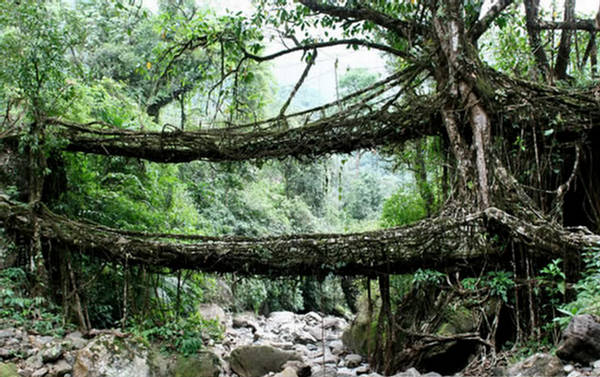1 |
When,
during a day, does it rain the most in Cherrapunjee?
- during
Morning
-
during
Evening
-
during
Night
-
All
the time
|
A |
[1]. The answer 'during Morning' is correct.
In Cherrapunjee the rain always fall during the morning. This
is because the two air masses,northeast and south flowing from
Meghalaya,are trapped in the valley of Cherrapunjee during the
night. In the morning when the sun arises the warm air masses
ascend over the Khasi Hills and condenses into clouds to bring
the rains.
Probably it may be preferable to do the chores in the evening
and night ;-) |
2 |
Which
months of the year does it rain the least?
-
June,July,August
-
March,April,May
-
September,October,November
-
December,January,February
|
A |
[4].December,January,February, is correct
because it is not the monsoon season and Cherrapunjee receives
minimal to no rain (yes, ZERO millimeters) during this season!
June, July,August is the monsoon season and the maximum rainfall
occurs during this period. |
3 |
How
do people in Cherrapunjee get their drinking water?
-
The
people collect the rain to use it as their drinking
water
-
The
people get their drinking water from the local water
treatment plant
-
The
people trek for miles to get their drinking water
-
The
people get their drinking water from the local wells
|
A |
[3].It would be hard to imagine a water
problem at the rain capital of the world. However, ironically,
people at Cherrapunjee, suffer from lack of availability of
drinking water! In fact the people have to trek miles to get
their drinking water :-(
Hard to imagine, Huh? |
4 |
How
do people cross streams in Cherrapunjee?
-
using
wood bridges
-
using
boats
-
by
swimming/wading
-
using
tree root bridges
|
A |
 [4].
To cross the streams of Cherrapunjee people make bridges out
of tree roots such as the Ficus Elastica(rubber tree). These
bridges are called "living bridges".The roots of
the trees are guided across the stream until they take root
on the other side. This process is continued until it takes
a bridge form. The whole process can take 10-15 years but
these bridges can last hundreds of years. The oldest bridges
in Cherrapunjee are at least 500 years old! [4].
To cross the streams of Cherrapunjee people make bridges out
of tree roots such as the Ficus Elastica(rubber tree). These
bridges are called "living bridges".The roots of
the trees are guided across the stream until they take root
on the other side. This process is continued until it takes
a bridge form. The whole process can take 10-15 years but
these bridges can last hundreds of years. The oldest bridges
in Cherrapunjee are at least 500 years old!
|
5 |
What
happens in Khasi's (Cherrapunjee's) culture when a bride
gets married?
-
The
bride comes to groom's house
-
The
groom comes to the bride's house
-
They
both stay in their own house
-
None
of the above
|
A |
[2]In most parts of India when people
get married the bride comes to groom's house, but in Cherrapunjee,
the groom goes over to the bride's house. Khasi's follow a
matrilineal culture. In fact the children take on the surname
of their mother and not their father! |